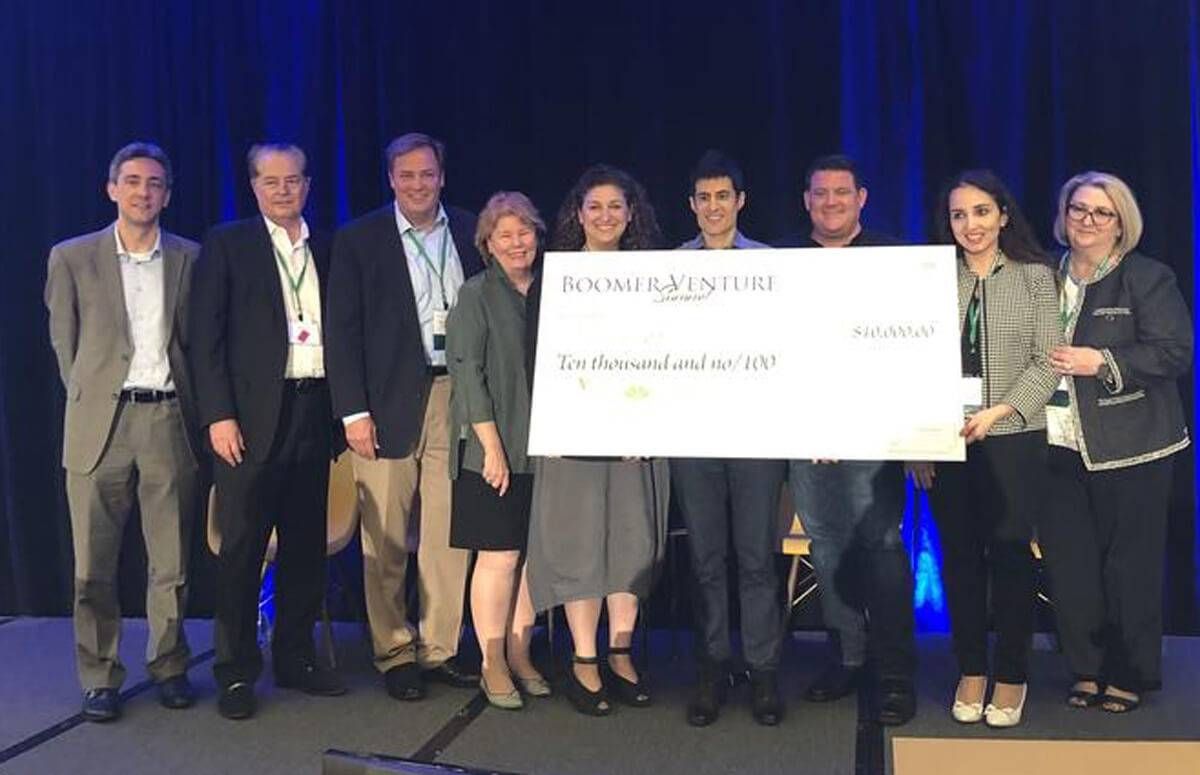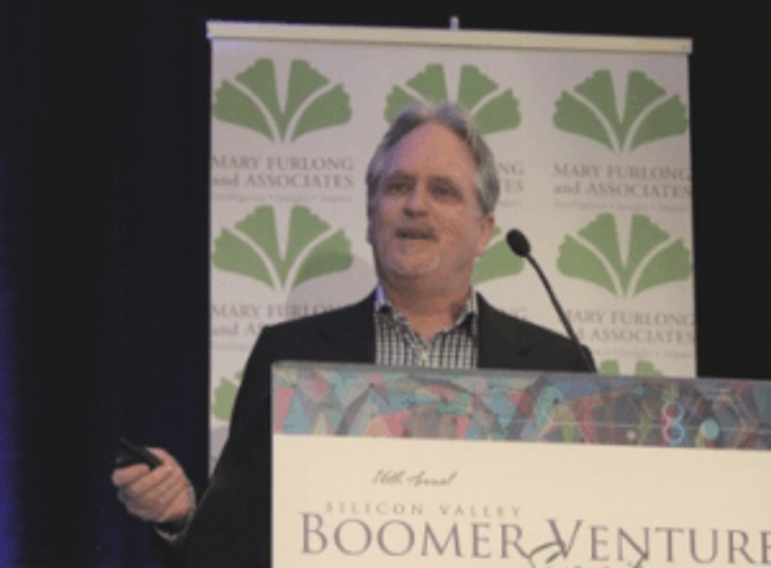Silicon Valley's Booming Interest in Businesses for Boomers
Trends and winners at the Silicon Valley Boomer Venture Summit
There’s been a lot of hand-wringing about the lack of innovation and investment in products and services for older Americans. But after attending the 2019 Silicon Valley Boomer Venture Summit in Berkeley, Calif., and moderating three sessions there, I’m here to report that it looks like things are changing — for the better.

The Silicon Valley Boomer Venture Summit brought together entrepreneurs of all ages in what’s called “the aging space” and venture capitalists interested in investing in those founders’ businesses. And the breadth of those enterprises was wide: from financial management apps to a job placement service for people 50+ to — believe it — a special toilet with sensors for early detection of elder health issues like urinary tract infections (more on that shortly).
“There were more investors at this summit than ever before,” said Mary Furlong, executive producer of the 16th annual Silicon Valley Boomer Venture Summit and a former Next Avenue Influencer in Aging. “And investors from all types — angel investors, family offices, corporate venture capitalists and innovators — were represented.”
Orlov called "voice first" technology like Amazon's Alexa "the first technology in years that I refer to as a 'delighter.'"
An especially intriguing partnership I learned about at the summit: residents of senior housing facilities (most notably Carlton Senior Housing of Northern California) acting as testers for entrepreneurs’ new products and services. “I feel like my room is a tourist attraction,” one senior housing resident joked in a taped presentation.
Aging of Populations: 'The Most Profound Change'
One likely reason for Silicon Valley's growing interest in boomer ventures is something MIT AgeLab’s Joseph F. Coughlin (also a former Next Avenue Influencer in Aging) noted in his book The Longevity Economy: “The aging of populations represents the most profound change that is guaranteed to come to high-income countries everywhere, and most low- and middle-income ones as well.”
It's a change that's produced an evolution in tech products and services.
Laurie Orlov, CEO of the influential Aging in Place Technology Watch market research firm, explained at the summit how much had changed over the past 10 years in aging-in-place tech.
A decade ago, she noted, there were 39 million Americans 65 and older. There was no iPhone and Personal Emergency Response Systems (PERS) were pendants that senior housing residents wore around their necks, if they wore them at all.
Fast forward to 2019, Orlov said, and there are now nearly 55 million people 65+. What’s more, she added, the technology to help them has improved radically — from smart phones to attractive, wearable mobile PERS devices disguised as watches.
“You can now get out of your house, walk your dog and have fall detection on your wrist,” Orlov said. “And you’re even more likely to be able to be spoken to with it.” (Jeff Zimman, co-founder and chairman of the brain health company Posit Science, cracked at the summit's conclusion: “Big ugly PERS pendants can now be replaced by big ugly PERS watches.”)
Orlov called “voice first” technology like Amazon’s Alexa “the biggest disrupting wave we’ve had since the introduction of the web” and “the first technology in years that I refer to as a ‘delighter.’" She noted: “For the first time, the paradigm has shifted to an interface model that older adults can participate with by doing what they do best, which is talk.”
When Technology for Older Adults Stumbles
That doesn’t mean there aren’t still kinks in technology for older adults, though.

Stephen Popovich and Shelley Symonds, of Clairvoyant Networks, just wrote in the CSA Journal (the publication for Certified Senior Advisors) about the trouble a 65-year-old friend had after buying the iWatch 4 — with fall detection — soon after it came out in 2018.
When the watch detected a fall, it would give the user a chance to call an emergency contact. But if the watch detected the user to be immobile for one minute after the fall, it would connect to authorities. Problem was, their friend was a soccer player and the Apple Watch’s app incorrectly detected multiple falls while he was on the field. If he hadn’t stopped to push the OK option, the watch would’ve triggered an alert.
Another problem with “situational awareness” tech products for caregivers, the authors wrote: “There are usually different sensors from different companies and they do not play well together.”
That said, the authors predicted, in coming years, “technology transformation will enable more older Americans to be served, using fewer caregivers, and at a lower cost.” The next five years, they wrote “will transfigure this industry.”
The 3 Winners at the Silicon Valley Boomer Venture Summit
As for the here and now, these are the three companies that presented at the summit and won competitions there:
Toi Labs, and its TrueLoo smart toilet being tested in senior-living communities: This company won the summit’s Business Plan Competition and received a $10,000 check as a result. Toi Labs co-founder Vik Kashyap explained that the toilet sensors’ technology prevents hospitalizations by noting signs of dehydration, which could lead to a urinary tract infection or a fall. The early warnings, which connect to a Wi-Fi cloud for caregivers and health professionals, Kashyap said, can then help the person avoid “a vicious cycle of hospital readmissions.”
Kashyap hopes to bring the toilet’s price down so older adults can buy it for their own homes. “We are creating the bathroom of the future,” he said.
The WAHVE and Golden companies, which won the summit’s Silicon Valley Innovation Competition, sponsored by AARP Innovation Labs: They’ll go on to compete in the competition’s finals in Washington, D.C. this fall.

As Next Avenue has noted in its article about WAHVE (Work at Home Vintage Experts), the company was founded by Sharon Emek to get full- and part-time, work-at-home jobs for people over 50 in the insurance industry. WAHVE's “pre-tiring” boomers, as Emek calls them, have blind interviews with employers so they won’t be turned down based on their appearance. “We’re trying to keep people earning money so they can stay healthy financially and mentally,” Emek said.
WAHVE has expanded to find jobs in the accounting and human resources fields, too. When Emek told the audience her company had $15.8 million in revenue, a loud WHOOP! filled the ballroom. The attendees were also impressed by WAHVE’s 38% gross profit margin.
Next Avenue has also written about Golden. Founder Evin Ollinger created this financial app to “make every senior financially resilient and secure.” His target audience: America's 75 million boomers caring for their 50 million parents. “Every Golden team member has cared for elderly parents,” Ollinger said.
Golden provides daily money management, elder fraud protection, help in unearthing government benefits and wealth and retirement planning. Ollinger said Golden has increased “average senior income by 10% to 20%” for thousands of customers. There’s a $20 monthly subscription fee (waived for low-income older adults) and a free 30-minute consultation.
Ollinger is currently in negotiations with major banks and financial services firms to offer Golden to their clients.
Few Financial Firms
Banks and brokerage firms, however, were in fairly short supply at the summit, especially compared with insurers. One reason: there weren’t many new ventures there with financial products or services.
“The [financial services] companies in this space are fewer,” Furlong said. “This category is in the second inning,” she noted, adding that the category is “not nearly as far along as care coordination, service delivery and memory solutions.”
Furlong added that “many of the new personal finance brands have not yet met the boomer market.” But, she added, “the opportunity is great.”
Maybe next year.


